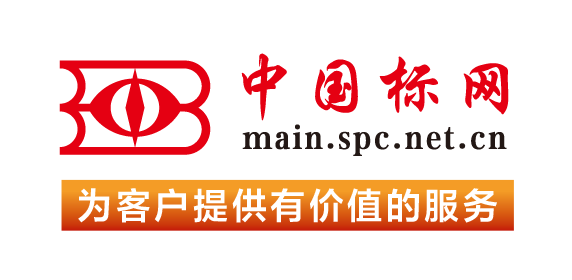AbstractThese specifications, including test methods, apply to flexible cellular rubber products known as latex foam rubbers but do not apply to sponge and expanded rubbers. The base material used in their manufacture shall be natural rubber, reclaimed rubber, synthetic rubber, alone or in combination. The structure of latex foam rubbers consists of a network of open or interconnecting cells. Latex foam rubbers are made from rubber latices or liquid rubbers. They are manufactured in sheet, strip, molded, or specific shapes. Latex foam rubbers shall have a vulcanized cellular structure with a porous surface. The cells shall be interconnecting and of a uniform character. Latex foam rubbers shall be either cored or solid. Latex foam rubbers shall have their grade numbers designated by two letters which identify the kind of latex foam rubber as follows: RC for latex foam rubbers cored and RU for latex foam rubbers uncored. Digits following the letters are used to indicate the degree of firmness, the softer grades being identified with the lower numbers and the firmer grades with the higher numbers. These rubbers shall be subjected to the following tests: accelerated aging test, compression set under constant deflection test, flexing test, low temperature test, and static fatigue test.1.1 These specifications, including test methods, apply to flexible cellular rubber products known as latex foam rubbers but do not apply to sponge and expanded rubbers. The base material used in their manufacture shall be natural rubber, reclaimed rubber, synthetic rubber, alone or in combination.1.2 In case of conflict between the provisions of these general specifications and those of detailed specifications or test methods for a particular product, the latter shall take precedence. Reference to methods for testing cellular rubber products should specifically state the particular test or tests desired.1.3 The values stated in SI units are to be regarded as the standard. The values in parentheses are for information only.1.4 This standard does not purport to address all of the safety concerns, if any, associated with its use. It is the responsibility of the user of this standard to establish appropriate safety and health practices and determine the applicability of regulatory limitations prior to use.Note 1—There is no known ISO equivalent to this standard.
These specifications are considered satisfactory for classifying wool or mohair by grade and provide a basis for acceptance of commercial shipments. Grade determined by visual examination is a common trade practice. In case of doubt or dispute, comparison of the measured average fiber diameter and fiber diameter standard deviation with the respective specification shall be used as the referee procedure for assigning grade. This specification is not intended for application to mixed lots, that is, lots of wool or mohair consisting of fleeces of different grades that are to be segregated into smaller more homogeneous lots before use. 1.1 These specifications cover the classification, by fineness grade, of wool or mohair that is in the grease, pulled, washed, or scoured state, or in the form of card sliver. 1.2 These specifications are applicable also to assignment of grade for wool or mohair in spun materials or products processed beyond carding on the woolen system but not on the worsted system which involves a combing process. Note 1—For fineness specifications for wool top, mohair top, and alpaca, refer to Specifications D3992 and D2252.
These specifications are considered satisfactory for classifying wool top or mohair top by grade and provide a basis for acceptance of commercial shipments.1.1 These specifications are applicable in the classification, by fineness grade, of the fiber in wool top, mohair top, wool yarns, mohair yarns, wool fabrics, and mohair fabrics of the worsted type.Note 1—For fineness specifications for wool, mohair, and alpaca, refer to Specifications D3991 and D2252.
1.1 This standard applies to all hand-worn or glove-type metal detectors used to find metal contraband concealed or hidden on people or other objects with hand-accessible surfaces. Hand-worn metal detectors (HWMDs) are significantly different in design compared to the more common hand-held metal detector (HHMD). For example, the HWMD generates a much more localized magnetic field than does the HHMD and the useful field of the HWMD is normal to the plane of the hand whereas the useful field of the HHMD is multi-directional.1.2 This standard describes baseline-performance requirements, which includes metal object detection performance, safety (electrical, mechanical, fire), electromagnetic compatibility, environmental conditions and ranges, and mechanical durability. The requirements for metal detection performance are unique and, therefore, test methods for these parameters are provided, including the design of test objects. An agency or organization using this standard is encouraged to add their unique operationally-based requirements to those requirements listed in this baseline-performance standard.1.3 This documentary standard describes the use of spherical test objects, instead of actual threat objects or exemplars of threat objects, to test the detection performance of hand-worn metal detectors. Spherical test objects are used because the detectability of spherical test objects is not orientation dependent, whereas this is not true for non-spherical test objects. This orientation-dependent detectability of non-spherical test objects may allow a HWMD to be incorrectly attributed a higher performance capability than that HWMD is capable of providing. To aid agencies wishing to add specific threat objects to their detection performance requirements, included in Appendix X1 is the analysis of the probability of detection for different orientations of agency-specific non-spherical threat objects.1.4 This standard does not purport to address all of the safety concerns, if any, associated with its use. It is the responsibility of the user of this standard to establish appropriate safety, health, and environmental practices and determine the applicability of regulatory limitations prior to use.1.5 This international standard was developed in accordance with internationally recognized principles on standardization established in the Decision on Principles for the Development of International Standards, Guides and Recommendations issued by the World Trade Organization Technical Barriers to Trade (TBT) Committee.
定价: 918元 / 折扣价: 781 元 加购物车
4.1 Composite materials consist by definition of a reinforcement phase in a matrix phase. In addition, ceramic matrix composites (CMCs) often contain measurable porosity which interacts with the reinforcement and matrix. And SiC-SiC composites often use a fiber interface coating which has an important mechanical function. The composition and structure of these different constituents in the CMC are commonly tailored for a specific application with detailed performance requirements. The tailoring involves the selection of the reinforcement fibers (composition, properties, morphology, etc.), the matrix (composition, properties, and morphology), the composite structure (component fractions, reinforcement architecture, interface coatings, porosity structure, microstructure, etc.), and the fabrication conditions (forming, assembly, forming, densification, finishing, etc.). The final engineering properties (physical, mechanical, thermal, electrical, etc.) can be tailored across a broad range with major directional anisotropy in the properties.4.2 Specifications for specific CMC components covering materials, material processing, and fabrication procedures are developed to provide a basis for fabricating reproducible and reliable structures. Designer/users/producers have to write CMC specifications for specific applications with well-defined composition, structure, properties and processing requirements. But with the extensive breadth of selection in composition, structure, and properties in CMCs, it is virtually impossible to write a "generic" CMC specification applicable to any and all CMC applications that has the same type of structure and details of the commonly-used specifications for metal alloys. This guide is written to assist the designer/user/producer in developing a comprehensive and detailed material specification for a specific CMC application/component with a specific focus on nuclear applications.4.3 The purpose of this guide is to provide guidance on how to specify the constituents, the structure, the desired engineering properties (physical, chemical, mechanical, durability, etc), methods of testing, manufacturing process requirements, the quality assurance requirements, and traceability for SiC-SiC composites for nuclear reactor applications. The resulting specification may be used for the design, production, evaluation, and qualification of SiC-SiC composites for structures in nuclear reactors.4.4 The guide is applicable to SiC-SiC composites with flat plate, rectangular bar, round rod, and round tube geometries.4.5 This guide may also be applicable to the development of specifications for SiC-SiC composites used for other structural applications, discounting the nuclear-specific chemical purity and irradiation behavior requirements.1.1 This document is a guide to preparing material specifications for silicon carbide fiber/silicon carbide matrix (SiC-SiC) composite structures (flat plates, rectangular bars, round rods, and tubes) manufactured specifically for structural components and for fuel cladding in nuclear reactor core applications. The SiC-SiC composites consist of silicon carbide fibers in a silicon carbide matrix produced by liquid infiltration/pyrolysis and/or by chemical vapor infiltration.1.2 This guide provides direction and guidance for the development of a material specification for a specific SiC-SiC composite component or product for nuclear reactor applications. The guide considers composite constituents and structure, physical and chemical properties, mechanical properties, thermal properties, performance durability, methods of testing, materials and fabrication processing, and quality assurance. The SiC-SiC composite materials considered here would be suitable for nuclear reactor core applications where neutron irradiation-induced damage and dimensional changes are significant design considerations. (1-8)21.3 The component material specification is to be developed by the designer/purchaser/user. The designer/purchaser/user shall define and specify in detail any and all application-specific requirements for design, manufacturing, performance, and quality assurance of the ceramic composite component. Additional specification items for a specific component, beyond those listed in this guide, may be required based on intended use, such as geometric tolerances, permeability, bonding, sealing, attachment, and system integration.1.4 This guide is specifically focused on SiC-SiC composite components and structures with flat plate, solid rectangular bar, solid round rod, and tubular geometries.1.5 This guide may also be applicable to the development of specifications for SiC-SiC composites used for other structural applications, discounting the nuclear-specific chemical purity and irradiation behavior factors.1.6 Units—The values stated in SI units are to be regarded as standard. No other units of measurement are included in this standard.1.7 This standard does not purport to address all of the safety concerns, if any, associated with its use. It is the responsibility of the user of this standard to establish appropriate safety, health, and environmental practices and determine the applicability of regulatory limitations prior to use.1.8 This international standard was developed in accordance with internationally recognized principles on standardization established in the Decision on Principles for the Development of International Standards, Guides and Recommendations issued by the World Trade Organization Technical Barriers to Trade (TBT) Committee.
定价: 646元 / 折扣价: 550 元 加购物车
This specification establishes the acceptance requirements and performance testing procedures for all hand-held metal detectors (HHMDs) used to find metal contraband concealed or hidden on people or other objects with accessible surfaces. It covers baseline performance requirements, including metal object detection performance, safety (electrical, mechanical, fire), electromagnetic compatibility, environmental conditions and ranges, and mechanical durability. This performance specification describes the use of spherical test objects, instead of actual threat objects or exemplars of threat objects, to test the detection performance of HHMDs. The spherically shaped test objects are constructed of either aluminum or steel. Their diameters and the metal used for the different classification of HHMD performance are covered by this specification, along with the electrical conductivity and magnetic relative permeability of the metals used in the construction of the test objects. The specification also defines the distance between the measurement plane and the detector plane for the different HHMD size classes, as well as the x-axis scan range.1.1 This standard applies to all hand-held metal detectors (HHMDs) used to find metal contraband concealed or hidden on people or other objects with accessible surfaces. This standard describes baseline performance requirements, which includes metal object detection performance, safety (electrical, mechanical, fire), electromagnetic compatibility, environmental conditions and ranges, and mechanical durability. The requirements for metal detection performance are unique and, therefore, test methods for these parameters are provided, including the design of test objects. An agency or organization using this standard is encouraged to add their unique operationally-based requirements to those requirements listed in this baseline performance specification.1.2 This standard describes the use of spherical test objects, instead of actual threat objects or exemplars of threat objects, to test the detection performance of hand-held metal detectors. Spherical test objects are used because the detectability of spherical test objects is not orientation dependent, whereas this is not true for non-spherical test objects. This orientation-dependent detectability of non-spherical test objects may allow a HHMD to be incorrectly attributed a higher performance capability than that HHMD is capable of providing. To aid agencies wishing to add specific threat objects to their detection performance requirements, included in Appendix X1 is the analysis of the probability of detection for different orientations of agency-specific threat objects.1.3 This standard does not purport to address all of the safety concerns, if any, associated with its use. It is the responsibility of the user of this standard to establish appropriate safety, health, and environmental practices and determine the applicability of regulatory limitations prior to use.1.4 This international standard was developed in accordance with internationally recognized principles on standardization established in the Decision on Principles for the Development of International Standards, Guides and Recommendations issued by the World Trade Organization Technical Barriers to Trade (TBT) Committee.
定价: 918元 / 折扣价: 781 元 加购物车
A2.5 A2.5.1 The test method establishes a uniform cantilever bending fatigue test to characterize and compare the fatigue performance of different angled device designs. This test method may be used to determine the fatigue life of an angled device at either a specific or over a range of maximum bending moment conditions. Additionally, this test method may be alternatively used to estimate the fatigue strength of an angled device for a specified number of fatigue cycles.A2.5.2 The test method utilizes a simplified angled device cantilever bending load model that may not be exactly representative of the in-situ loading configuration. The user should note that the test results generated by this test method can not be used to directly predict the in-vivo performance of the angled device being tested. The data generated from this test method can be used to conduct relative comparisons of different angled device designs.A2.5.3 This test method may not be appropriate for all types of implant applications. The user is cautioned to consider the appropriateness of the method in view of the devices being tested and their potential application.A2.5.4 This test method assumes that the angled device is manufactured from a material that exhibits linear-elastic material behavior; therefore, this test method is not applicable for testing angled devices made from materials that exhibit nonlinear elastic behavior.A2.5.5 This test method is restricted to the testing of angled devices within the linear-elastic range of the material; therefore, this test method is not applicable for testing angled devices under conditions that would approach or exceed the bending strength of the angled device being tested.1.1 These specifications and test methods provide a comprehensive reference for angled devices used in the surgical internal fixation of the skeletal system. This standard establishes consistent methods to classify and define the geometric and performance characteristics of angled devices. This standard also presents a catalog of standard specifications that specify material, labeling, and handling requirements, and standard test methods for measuring performance related mechanical characteristics determined to be important to the in vivo performance of angled devices.1.2 It is not the intention of this standard to define levels of performance or case-specific clinical performance for angled devices, as insufficient knowledge is available to predict the consequences of their use in individual patients for specific activities of daily living. Futhermore, this standard does not describe or specify specific designs for angled devices used in the surgical internal fixation of the skeletal system.1.3 This standard may not be appropriate for all types of angled devices. The user is cautioned to consider the appropriateness of this standard in view of a particular angled device and its potential application.NOTE 1: This standard is not intended to address intramedullary hip screw nails or other angled devices without a sideplate.1.4 This standard includes the following test methods used in determining the following angled device mechanical performance characteristics:1.4.1 Standard test method for single cycle compression bend testing of metallic angled orthopedic fracture fixation devices (see Annex A1).1.4.2 Standard test method for determining the bending fatigue properties of metallic angled orthopedic fracture fixation devices (see Annex A2).1.5 The values stated in SI units are to be regarded as standard. No other units of measurement are included in this standard.NOTE 2: There is currently no ISO standard that is either similar to equivalent to this standard.1.6 Multiple test methods are included in this standard. However, the user is not necessarily obligated to test using all of the described methods. Instead, the user should only select, with justification, test methods that are appropriate for a particular device design. This may be only a subset of the herein described test methods.1.7 This international standard was developed in accordance with internationally recognized principles on standardization established in the Decision on Principles for the Development of International Standards, Guides and Recommendations issued by the World Trade Organization Technical Barriers to Trade (TBT) Committee.
定价: 646元 / 折扣价: 550 元 加购物车
5.1 The rejection of materials due to color is a common and expensive occurrence, and it is useful for a customer and producer to set color specifications with an associated tolerance before the transaction. This guide discusses the concept and details the ASTM standards to be used in the process.1.1 This guide leads the user through a process for establishing color specifications, including the target color and allowable tolerances. It refers to the appropriate ASTM standards that more thoroughly describe each step of the process beginning with expectations, encompassing caveats within the process and finally concluding with reporting.1.2 This guide does not suggest numerical values for tolerances. These values must be agreed upon by the parties involved.1.3 This standard does not purport to address all of the safety concerns, if any, associated with its use. It is the responsibility of the user of this standard to establish appropriate safety, health, and environmental practices and determine the applicability of regulatory limitations prior to use.1.4 This international standard was developed in accordance with internationally recognized principles on standardization established in the Decision on Principles for the Development of International Standards, Guides and Recommendations issued by the World Trade Organization Technical Barriers to Trade (TBT) Committee.
定价: 590元 / 折扣价: 502 元 加购物车
1.1 This index identifies standard specifications that cover the manufacture of cast iron soil pipe and fittings used in sanitary and storm drain, waste, and vent applications. It also includes ductile iron sanitary sewer and culvert piping.NOTE 1: The text of this standard references notes and footnotes which provide explanatory material. These notes and footnotes (excluding those in tables and figures) shall not be considered as requirements of the standard.1.2 This international standard was developed in accordance with internationally recognized principles on standardization established in the Decision on Principles for the Development of International Standards, Guides and Recommendations issued by the World Trade Organization Technical Barriers to Trade (TBT) Committee.
定价: 515元 / 折扣价: 438 元 加购物车
5.1 This guide is intended to provide guidance for developing ASTM unit specifications for nontraditional masonry units. The user of this guide is encouraged to review the Form and Style for ASTM Standards as well as the referenced unit specifications and test methods. Note that not all items presented in this guide are necessarily applicable or appropriate in all cases.5.2 ASTM specifications are not intended for proprietary products, but rather for a class of products that multiple manufacturers can produce, and are intended to ensure performance using those constituent materials or processes. Therefore, specific attributes that only relate to a specific brand should be avoided.5.3 This guide does not identify the complete range of considerations that may be required for a masonry unit manufactured using a non-traditional material. Traditional masonry units possess intrinsic properties that are commonly associated with masonry including but not limited to strength, fire resistance, durability, thermal and acoustical attributes.5.4 Non-traditional masonry unit products may meet all the physical property requirements of an existing ASTM standard unit specification, when tested using ASTM standard test methods. Nevertheless, performance of non-traditional masonry units is not assured since the intrinsic properties that are associated with traditional masonry units and assemblies may not be specifically evaluated through testing for specification compliance. Additionally, compliance with the physical properties in existing unit specifications does not mean that non-traditional units are in compliance with those specifications as traditional unit standards are only applicable to units produced with those materials and processes defined within that specification (refer to Appendix X1).1.1 This guide provides general guidance for developing ASTM unit specification for masonry units manufactured with constituent materials, manufacturing methods, and combinations thereof, that are not included in a current ASTM standard. This guide shall not be construed as permitting the use of a product conflicting with requirements of the governing building code.1.2 This standard does not purport to address all of the safety concerns, if any, associated with its use. It is the responsibility of the user of this standard to establish appropriate safety, health, and environmental practices and determine the applicability of regulatory limitations prior to use.1.3 This international standard was developed in accordance with internationally recognized principles on standardization established in the Decision on Principles for the Development of International Standards, Guides and Recommendations issued by the World Trade Organization Technical Barriers to Trade (TBT) Committee.
定价: 590元 / 折扣价: 502 元 加购物车
 购物车
购物车 400-168-0010
400-168-0010











 对不起,暂未有“specifications”相关搜索结果!
对不起,暂未有“specifications”相关搜索结果!













